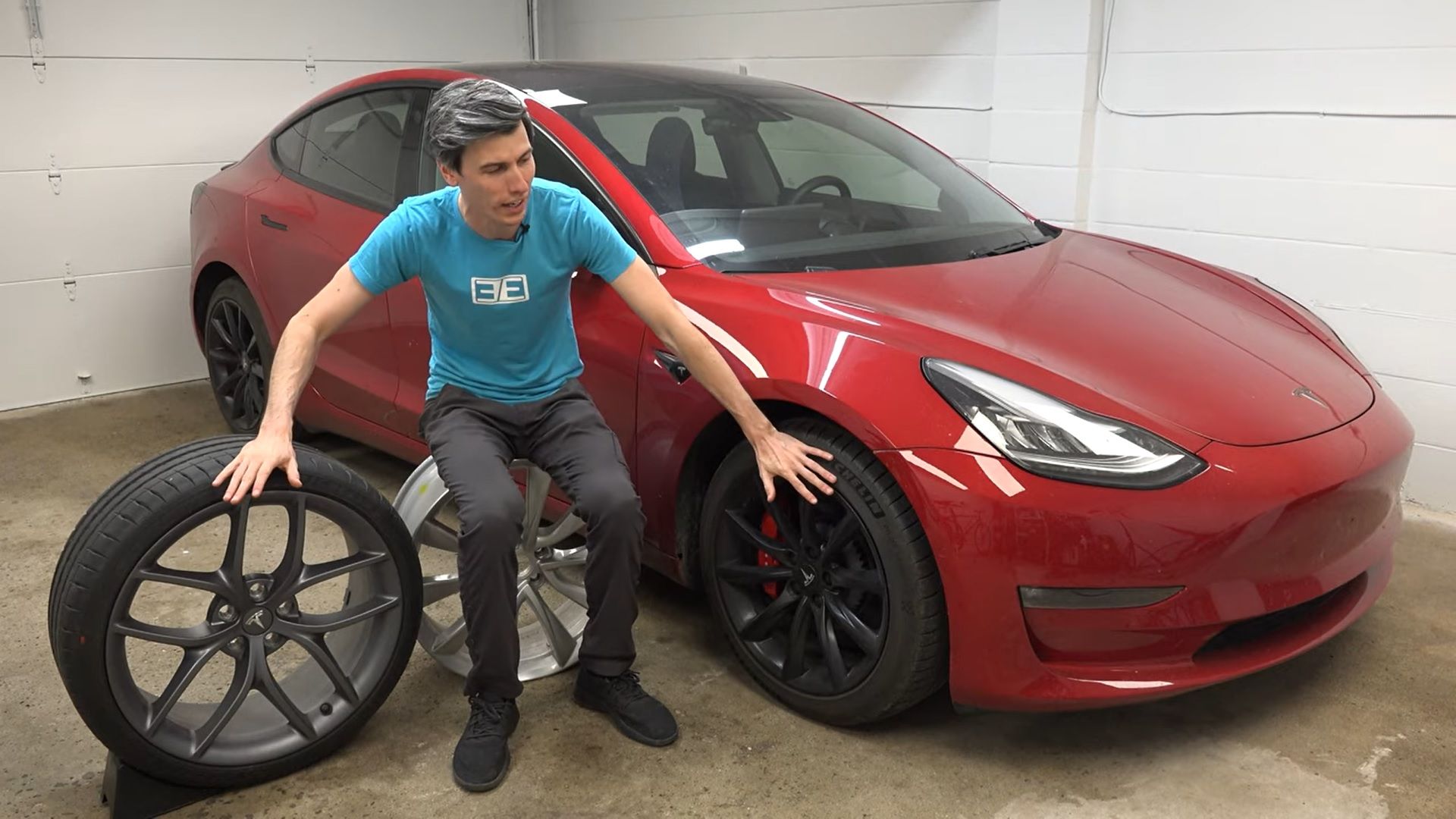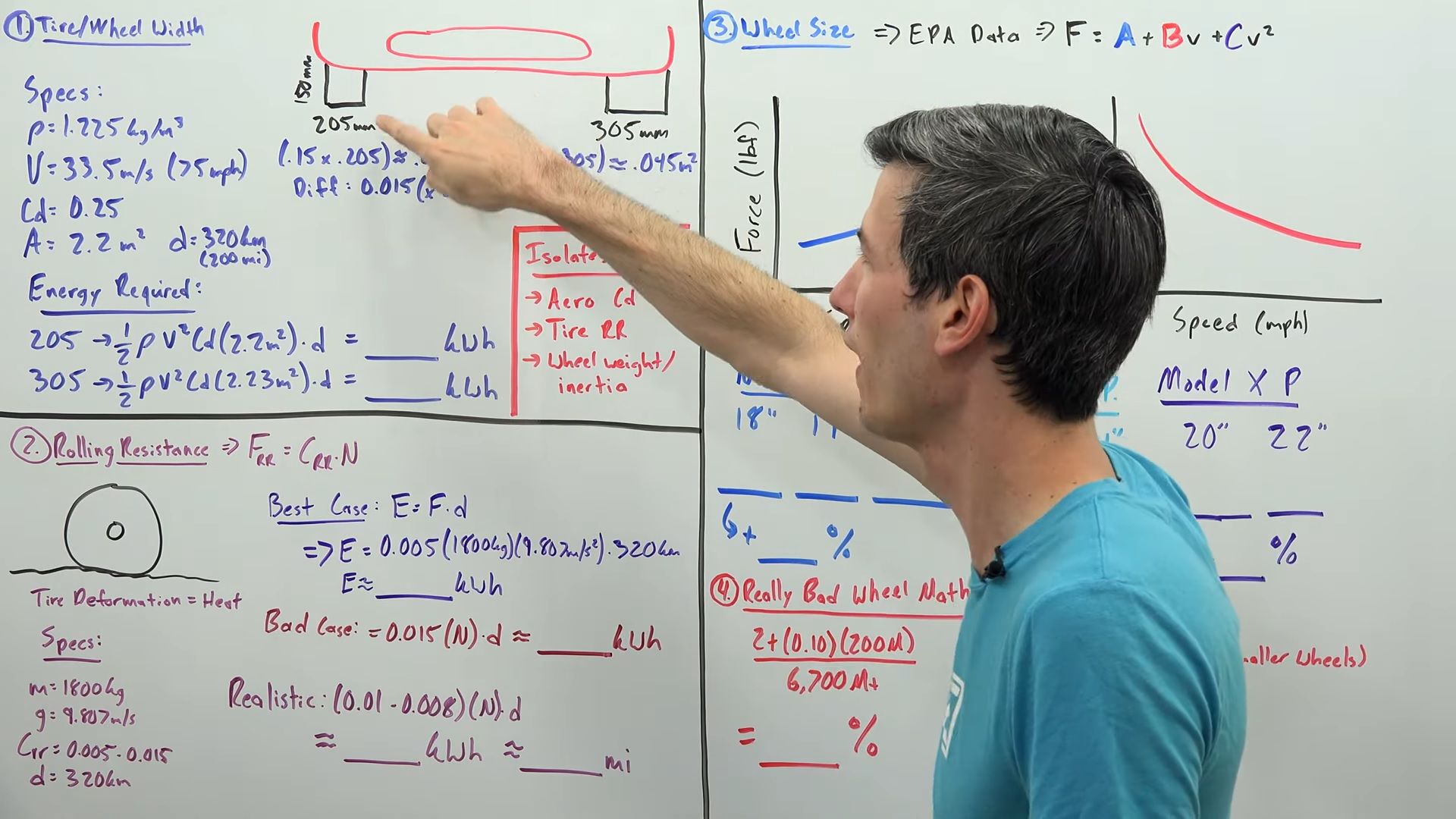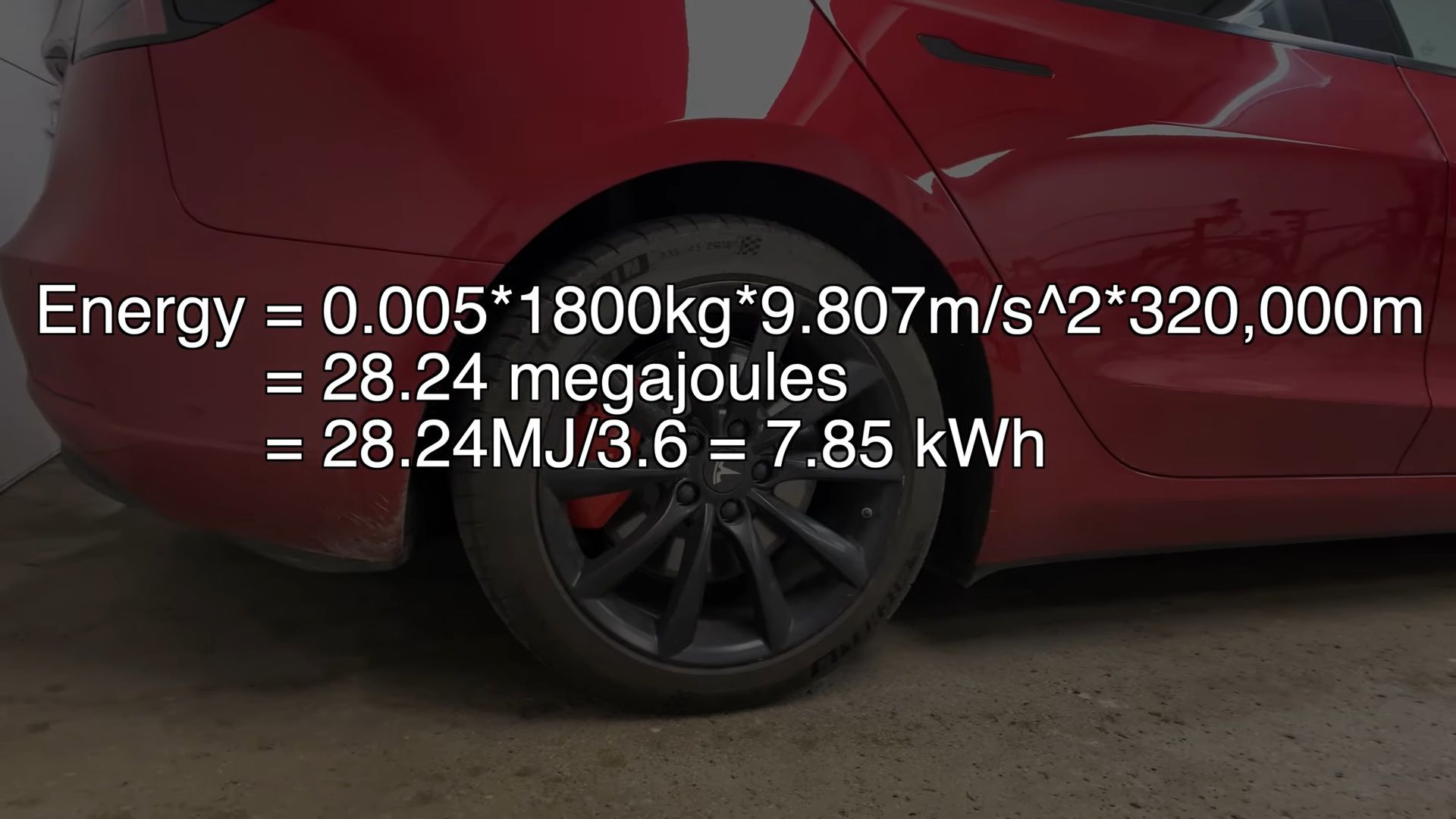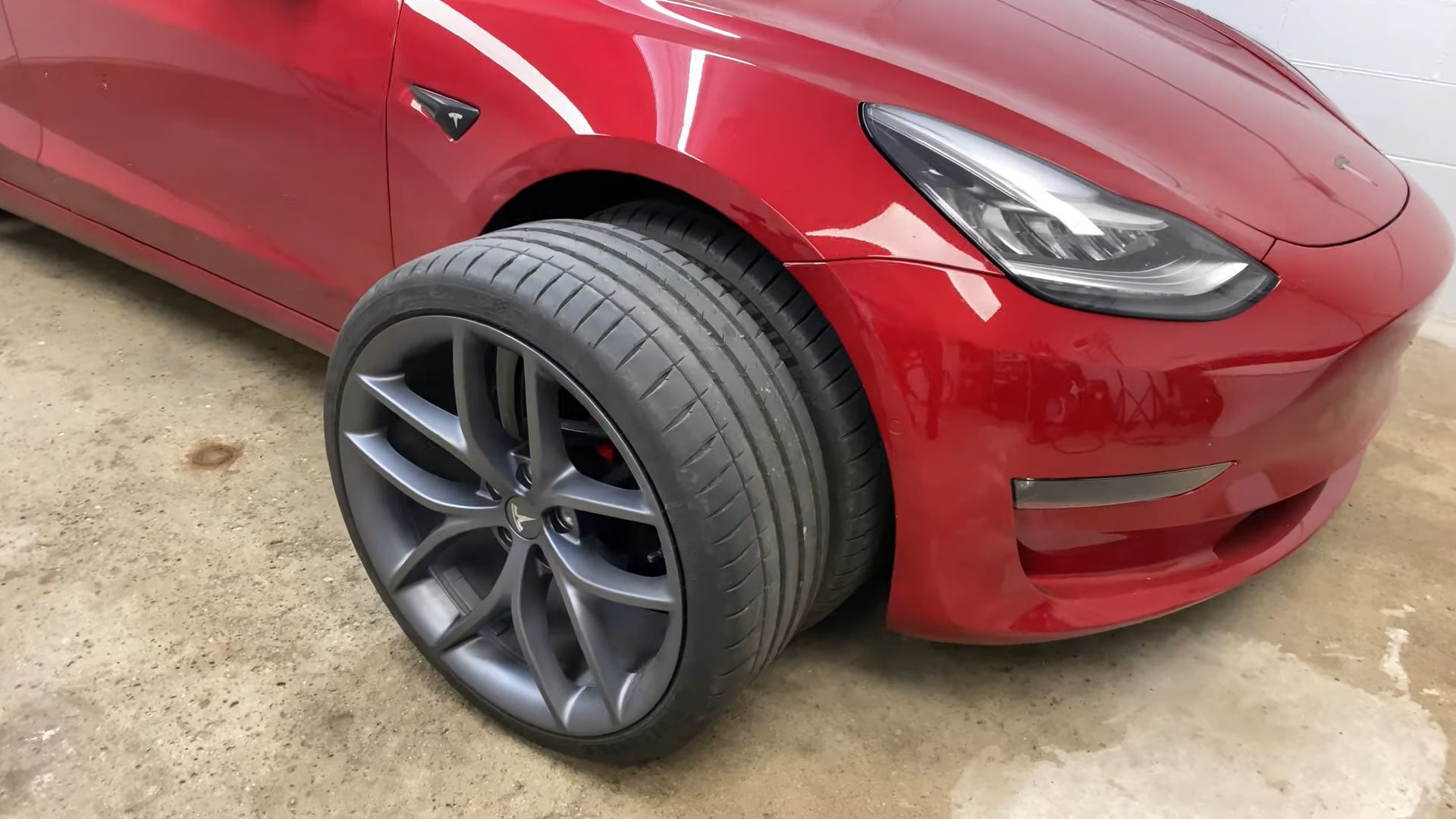Since electric powertrains have started crawling inside our cars, manufacturers had to find ways to make said powertrains as efficient as possible. Aside from battery chemistry, size, and other such factors, an EV’s ability to travel more miles on a full charge is also an affair of aerodynamics and rolling resistance.
In the video below, Jason Fenske of Engineering Explained shows why big wheels impact an electric car’s driving range.
In typical EE style, you’ll get to see a fair share of formulas and calculations that help explain why bigger wheels hurt range. It’s also important to note that Mr. Fenske refers to that particular case when overall tire diameter remains the same, but the wheels are actually bigger. This basically means the car will have to ride on smaller-sidewall tires. At the same time, width also plays a role, because it dictates the frontal area of a tire.
In the end, it all comes down to aerodynamics and airflow, in particular. Specifically, a 20-inch wheel is going to mess up the airflow (aka create turbulence) around it more than an 18-inch wheel, for example.
To counteract that effect, more and more carmakers are starting to use aero covers for the wheels. That’s also the reason why McLaren opted for covered front wheels for the Speedtail – to shut down any turbulence that might increase drag and therefore slow the car down.
In an electric car (just like any other car, for that matter) more drag means that the powertrain has to work harder to push through the air (i.e. needs more energy), which in turn depletes the battery quicker, hence a shorter range.
Ideally, you’ll want to have a flat surface throughout, with the tire and the wheel perfectly aligned in a solid sheet. In reality, that’s impossible to achieve because brakes need cooling so the wheels has to have some free space to let the air flow in to the calipers and rotors and then go out.
Of course, this is all backed up by numbers and calculations and if that’s what you’re into, check out the video below.




